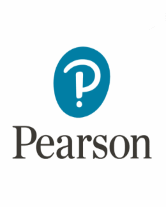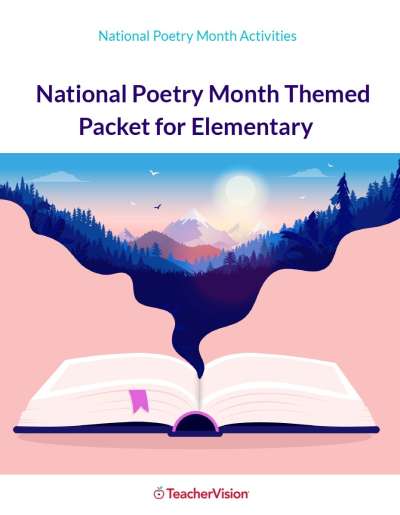Objective
This lesson is designed to teach primary students to make inferences as a reading comprehension strategy. The lesson uses the book, Animals Should Definitely Not Wear Clothing by Judi Barrett. In this lesson, students will draw on their prior knowledge and use the information from the pictures in the book to articulate (verbalize) the inference the author is making in the text. This is the first of a set of lessons designed to teach students how to make inferences.
Planning and DiagnosticsFor students to successfully complete this lesson, they should know how to connect what they already know to the text. They should be able to make guesses and predictions related to a story and visualize what is happening in the story. For further information, you may want to review Activating Prior Knowledge.
Materials
- Animals Should Definitely Not Wear Clothing by Judi Barrett
- Construction paper
- Crayons
Procedure
Hook/Engagement
This book introduces the skill of making inferences by using the clever relationship between text and illustrations. On every page, an illustration completes an idea that is only partly explained by the text. For example, on the first page, the text says that wearing clothing "would be disastrous for a porcupine." The picture on the facing page shows a porcupine wearing something that looks like tight-fitting pajamas or a dress. The poor porcupine's quills are poking through the garment, disastrously shredding it. Although the text doesn't say so, the inference is that the porcupine's quills would poke through the clothing and ruin the clothes – as illustrated in the text. In other words, the illustrator helps makes the inference for us.
To introduce the lesson, begin by writing this sentence on the board:
Old Mr. Chicken was standing by the side of the road. He heard what sounded like a BIG TRUCK coming. He decided to cross the road anyway. Unfortunately, he never made it to the other side. Poor Old Mr. Chicken.
Ask students what happened to Mr. Chicken. Probably at least one student will suggest that Mr. Chicken was run over by the truck. That's a reasonable conclusion (inference). Ask, "But how do we know that? Did the author say the chicken was run over by the truck? Where does it say that?"
Ask students what they think the author wants us to think. The author probably wants us to think that Mr. Chicken was run over by the truck. How do we know? The author gives us clues.
Clues:
Mr. Chicken was standing by the side of the road.
Something that "sounded" like a big truck was coming.
Mr. Chicken decided to cross the road anyway.
Mr. Chicken never made it to the other side.
The author suggests that we should feel sorry for "poor old Mr. Chicken."
The author never says that Mr. Chicken was run over by the truck. But we are given just enough information to think that this is what happened. The author seems to want us to think that Mr. Chicken was run over by a truck, and we do. That's called "making an inference." It's also called "reading between the lines." Making an inference means understanding something from the text that the author doesn't tell us directly.
Here's another example:
Last night I baked a dozen cookies. I left them out on the kitchen table to cool. Just before I went to bed, I saw a little mouse under the table looking at me. She looked hungry! I turned off the light and went to bed. When I came down in the morning, one of the cookies was gone. Another was half-eaten. "Oh well," I thought, "I guess she wasn't that hungry."
Ask students to make inferences from this text (e.g., the mouse ate the cookies, the person didn't mind that the mouse ate the cookies, the person was very stupid, etc.)
If you have time, and if you think students can manage it, ask them to write something themselves that requires the reader to make an inference.
Since Animals Should Definitely Not Wear Clothing uses illustrations, have students practice making inferences by looking at picture that are partially covered, and then using their own knowledge to figure out what is covered in the picture. For example, you could use the cover of the book, The Paper Bag Princess or David's Father, by Robert Munsch, partially cover a character on the cover, and ask students what they think the story is about. As they make guesses, reveal more of the character, strategically uncovering clues until students have all the information to make an inference about the content of the book.
Students should narrow their choices of possible answers as more information is given. Discuss how they used the facts along with what they already know to make a good guess, or an inference.
Vocabulary
Make an inference-"read between the lines," guess what the author intends to say
Definitely-for sure, certainly, without doubt
Disastrous-very, very bad
Terribly hot-very, very hot
Manage-get along, to perform in spite of something (I can't manage without you. We can often manage to understand the author's meaning even if the meaning is not told to us directly.)
-
Measurable Objectives
Explain to students, "Readers often have to guess about an author's meaning. Good writers don't tell us everything directly in words. During this lesson, we're going to practice making inferences. We'll do it together at first, and then I'll ask you to make some inferences on your own. That way, I'll be able to see if you have learned what I want to teach you."
Focused Instruction
Show students the cover of the book, Animals Should Definitely Not Wear Clothing, by Judi Barrett and brainstorm all of the types of clothing that students wear. Ask students why animals should not wear clothing and make a list of reasons as a class.
Explain that sometimes an illustrator gives clues about the author's meaning. In other words, the picture helps us make an inference.
Tell students that they will make inferences about why the author thinks that certain animals should not wear clothing. Then use the illustrations to check the inferences. Say,
"The title of the book is Animals Should Definitely Not Wear Clothing. This author expects us to do some of the work. That's part of the fun of reading-finding the secret message between the writer and the reader. We guess what the author and illustrator want us to know. It's not because they can't tell us something, but they know we're smart enough to understand, even if we're not told everything directly.
"I am not going to show you the illustrations yet. Listen to the story and make pictures in your mind of each animal wearing clothing. I think that you will agree that most animals look very silly in clothes. However, there are some animals that wear clothing occasionally. Think about which animals might wear clothing and we will talk about it at the end of the story."
Start reading the story: "Animals should definitely not wear clothing...because it would be disastrous for a porcupine..."[show the text, but not the picture.]
"Now, why would it be disastrous for a porcupine? (Remember, disastrous means very, very bad.). Why do you think the author writes that it would be "disastrous" for a porcupine to wear clothes? Hmmm....Let me try to make an inference."
"First, I am going to ask myself what I know about porcupines. Then I am going to think of the text and make an inference.
What do I know about porcupines?
Well, I know that porcupines are small, close to the ground, have four legs, and sharp quills.
What do I think about the text, Animals Should Definitely Not Wear Clothing?
I am going to make a picture in my mind of a porcupine wearing clothes. The porcupine is wearing pants. The porcupine is so close to the ground that the pants don't fit and its quills are making holes in the pants.
"So, the inference I make is that the author thinks that porcupines should not wear clothes because the clothes won't fit and their quills would make holes in them.
"Now let's look at the illustration. It shows a porcupine wearing a dress, with its quills making holes in the dress. My inference was a little bit different because I had a little bit different idea than the author and illustrator, which is OK. The main thing is that I did the work of guessing the author's meaning by myself."
Emphasize throughout the lesson that students' inferences will be different because they are based on our background knowledge. Tell them that this knowledge is unique to all of us.
Guided Practice
As you read each page, cover the illustrations, and ask the students to make inferences about why the author might think that each animal should not wear clothing. Encourage students to visualize each animal, making pictures in their head from the text. Ask them to think of what is unique about each animal. Read, "because a camel might wear it in the wrong places." Say, "Picture a camel in your mind. What does a camel look like? What is unique about a camel? Why would clothes be silly on a camel?"
Student respond with something such as:
"I know that a camel is tall, has four long legs, a shaggy coat and at least one hump on its back. My inference is that a camel shouldn't wear clothes because it might wear them on its humps."As you go through the book, cover each illustration and ask why each animal should not wear clothing. Read the text, and give students two minutes to describe the picture in their mind to a partner. Continue through the book, encouraging students to make inferences between the text and what they know. Stop before the page that says, "...because moose could never manage."
Independent Practice
When you get to this page, cover the illustration. Ask each student to infer why a moose could never manage clothes. Have them draw and explain or write about their inferences.
Have students continue the process with the next page, "because opossums might wear it upside down by mistake." Ask students to share their inferences and illustrations and explain why they think that opossums might mistakenly wear clothes upside down.
Assessment
Examine students' drawings and listen to their conversation to determine if they are comfortable using what they know to make inferences. Students should be able to use their prior knowledge along with the text to make an inference. If some students are able to write, you can ask them to write a sentence or two that requires the reader to make an inference. This is perhaps the best way of assessing if students really understand how to make an inference.
Reflection and Planning
If students are struggling with this skill, review the skills of activating prior knowledge and making predictions. The more background knowledge students have, the easier it is for them to make inferences. Be sure students have a good understanding of these concepts before trying to teach them about making inferences.
If students are proficient at making inferences using their background knowledge, use a different book and have students make inferences about what the author has intentionally left unstated. Other lessons on making inferences to try: Too Many Tamales and Why Mosquitos Buzz in People's Ears.

Use a lesson that is designed to teach primary students to make inferences as a reading comprehension with a strategy. The lesson uses the book Animals Should Definitely Not Wear Clothing by Judi Barrett.



